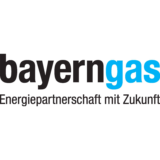
Towards sustainable hydrogen production: Integrating electrified and convective steam reformer with carbon capture and storage leads the next-generation hydrogen production plant.
In this article, we have developed an innovative and sustainable new process for producing hydrogen. We have integrated electrified steam methane reforming (e‑SMR) with convective reforming and carbon capture (CCS).
The plant is designed to substantially enhance the sustainability and efficiency of hydrogen production while addressing the major environmental concerns of traditional methods.
Key components of this new process scheme:
- Electrified Steam Methane Reforming (e‑SMR):
- The reactor utilises electric heating. This not only lowers the carbon footprint but also reduces natural gas consumption.
- Convective Reforming:
- The process scheme involves also a convective reforming which integrates the heat recovery. In this way, the overall process efficiency is further increased.
- Carbon Capture (CCS):
- By integrating a CCS step it is possible to further avoid CO₂ emissions.
Plant functionality:
This proves converts natural gas into hydrogen through steam methane reforming. Unlike traditional plants, which rely heavily on burning methane for heat, this scheme uses electric heating to supply the necessary energy for the endothermicity of the reaction.
By optimizing the balance between electrification, convective reforming, and CCS, the plant can achieve high productivity with a minimized energy demand and carbon footprint.
Environmental and economic benefits:
The combination of electrified and convective reforming with CCS enables the plant to achieve a 35% reduction in natural gas consumption and 85% decrease in CO₂ emissions. This makes the plant not only more sustainable but also more cost-effective. The levelized cost of hydrogen (LCOH) is 0.28 €/Nm³ H₂ remains competitive, especially when compared to conventional hydrogen production methods that use CCS.
This innovative process scheme represents an innovative solution to produce low carbon hydrogen. By leveraging process intensification and carbon capture, we were able to develop a cleaner and more efficient solution that aligns with both global efforts to transition to low-carbon energy systems and production cost reduction.
Full technical details in our last publication.


















